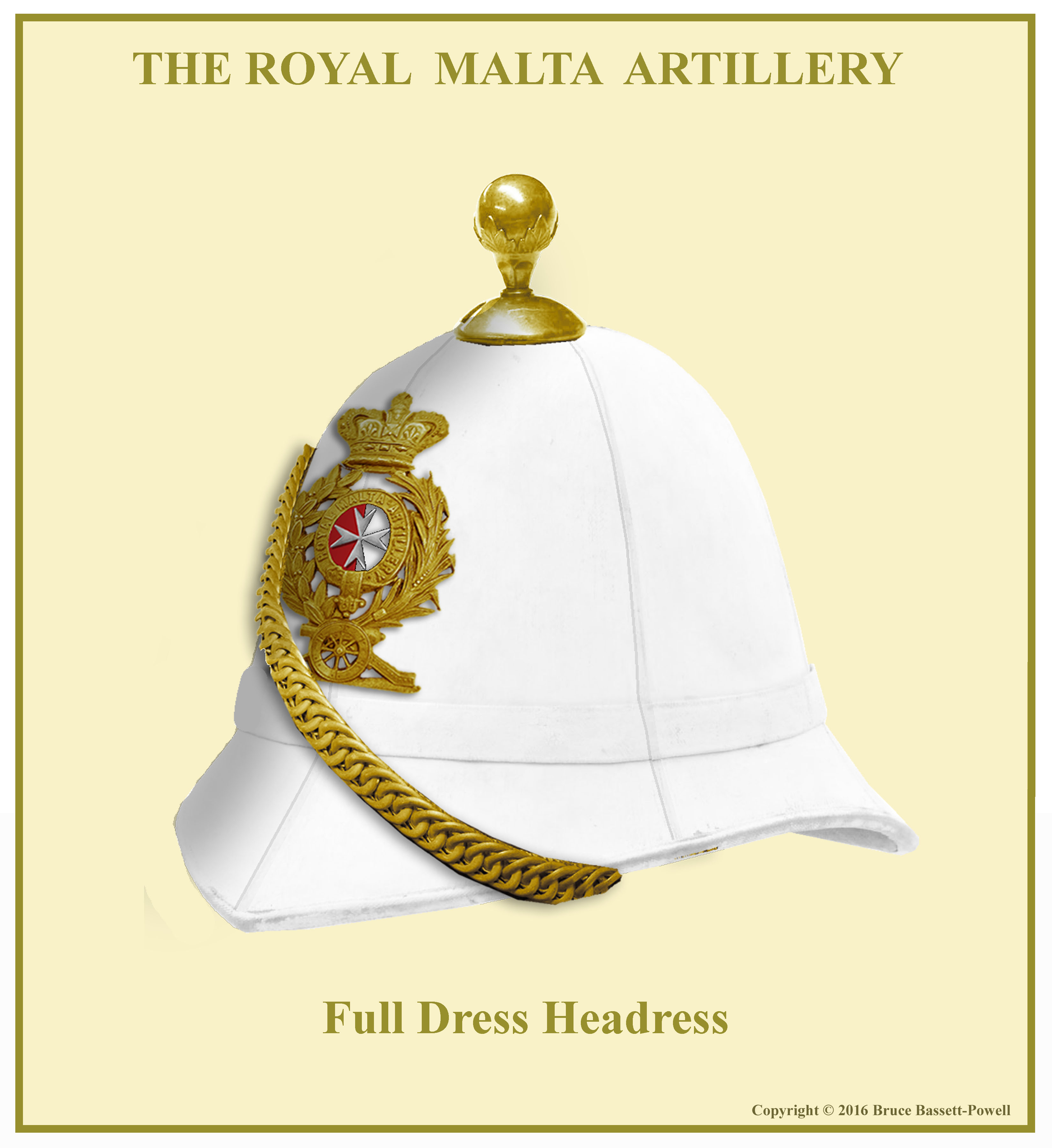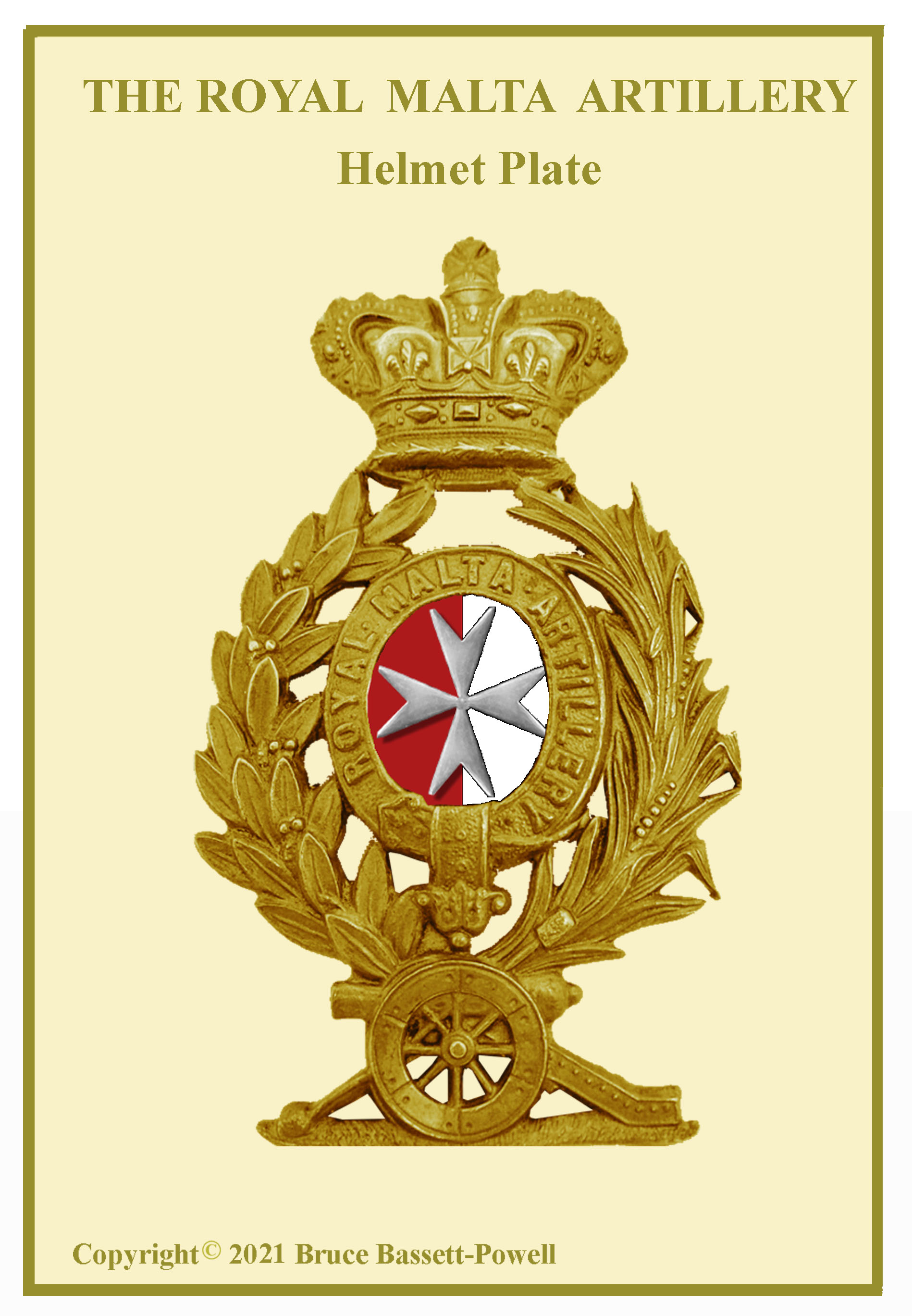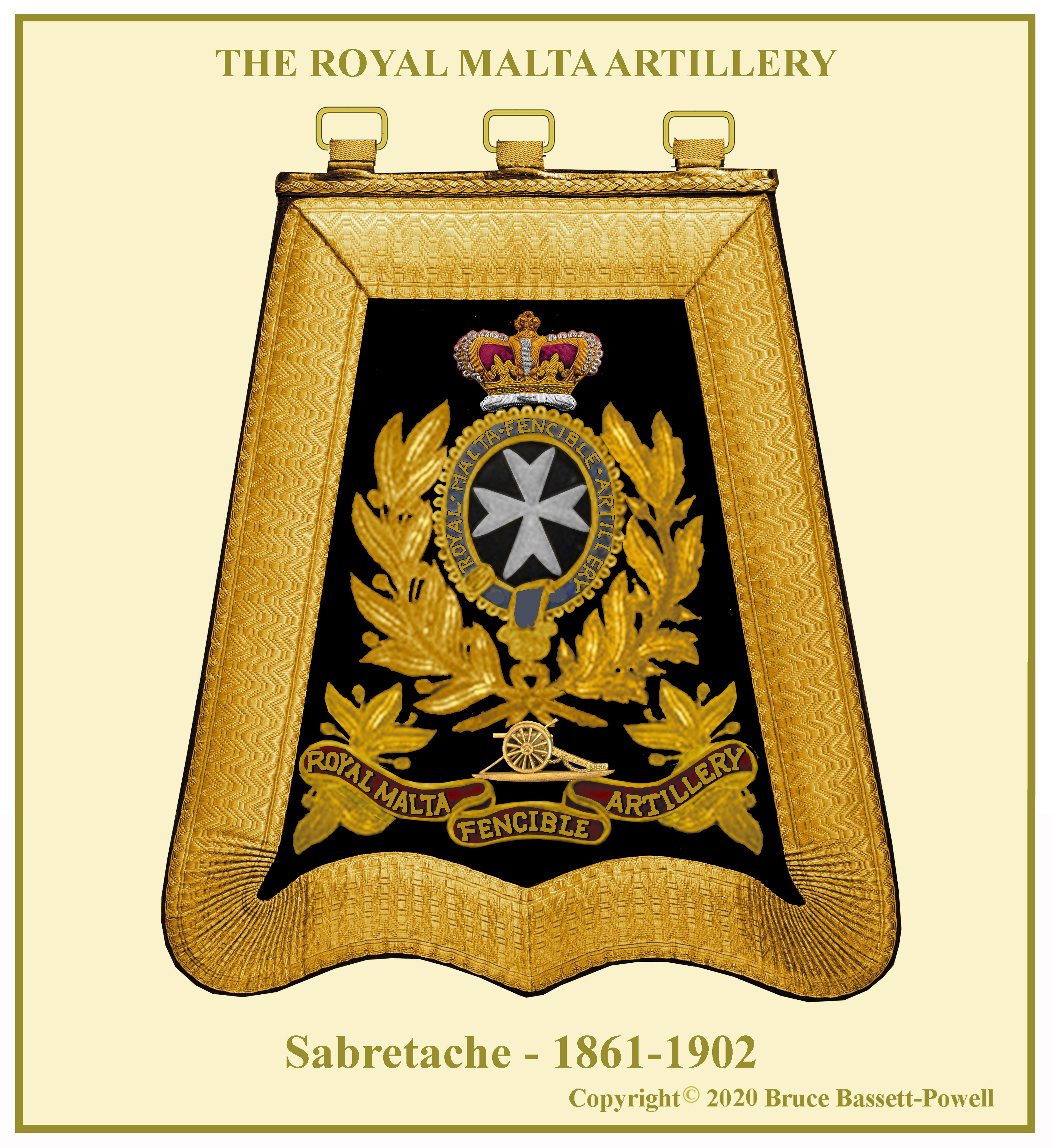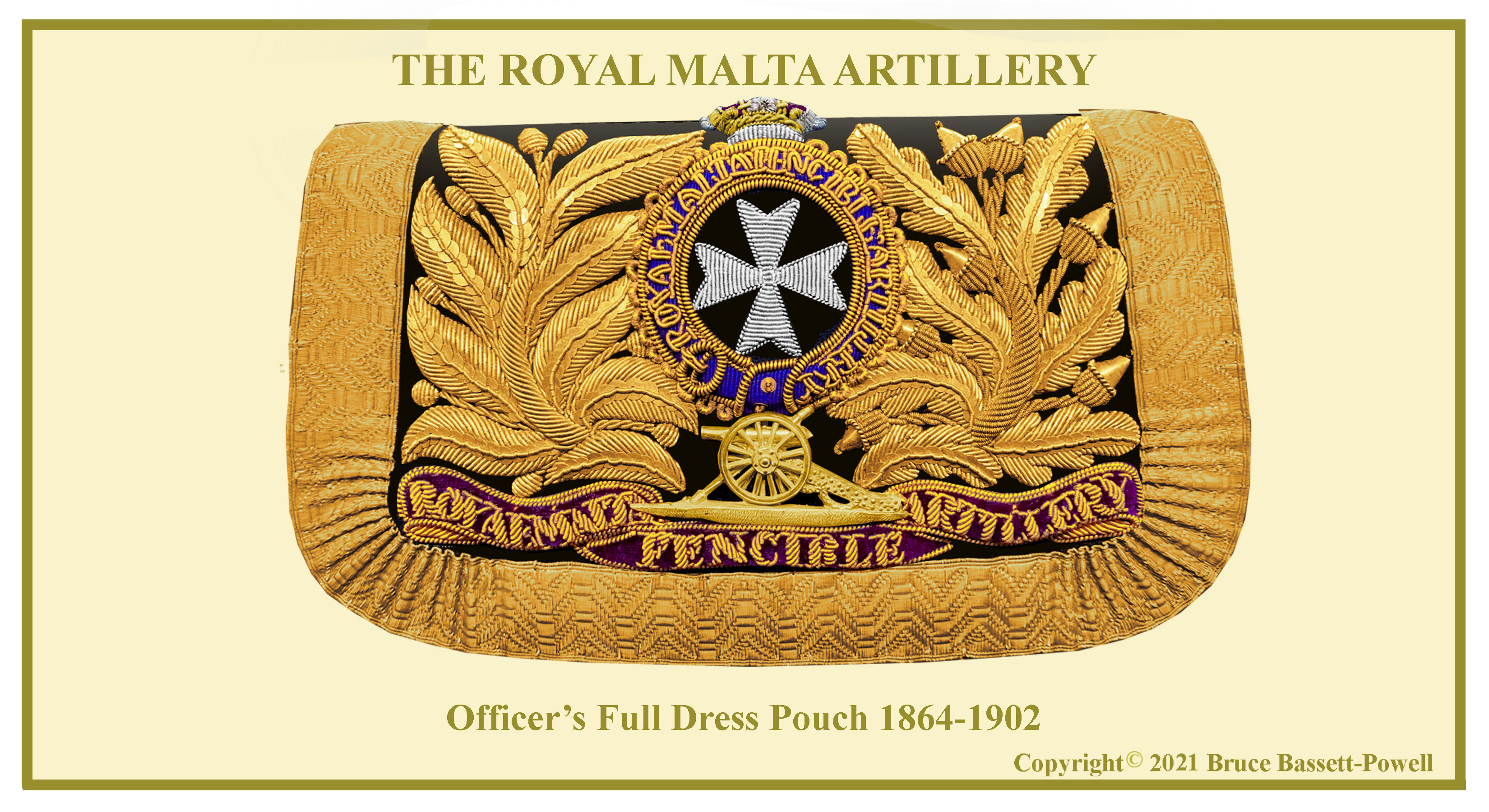UNIFORMS, ARMS & EQUIPMENT - ROYAL ARTILLERY
THE ROYAL REGIMENT OF ARTILLERY 1881-1902
THE ROYAL MALTA ARTILLERY
UNIFORM
Officers of the Royal Malta Artillery did not adopt the home service helmet. Instead, the white foreign service helmet was worn with a distinctive badge which incorporated the Cross of the Knights of Malta.
The uniform for both officers and men were identical to that of the Royal Artillery. Officers’ sabretaches and pouches had the Maltese Cross in the design as did the belt clasp.
Other ranks of the Royal Malta Artillery wore the white helmet with ball without a badge of any kind.
The The first gunners on the Island of Malta were recruited by the British as early as 1794. It consisted of Maltese cannoneers with a company of French émigré Artillery. When Napoleon invaded the island in 1798, the unit was disbanded and some of the cannoneers escaped to Portugal. Two years later the French were ejected from Malta by the British and by 1801 two companies of Militia Coast Artillery were formed. By the Treaty of Amiens (1802) Military forces on the island were to consist of both Maltese and Neapolitan troops with the former, known as Provincials, mustering 2,000 men in two battalions with a battalion of Coast Artillery of 300 men. The Militia Coast artillery became the Malta Coast Artillery in 1803
Malta became part of the British Empire in 1814 and on 16th February 1815, the Provincials, Veterans, and the Companies of Coast Artillery were incorporated into the Royal Malta Fencibles. On 25th January 1861, the Royal Malta Fencible Regiment was reconstituted into a corps of artillery with six batteries and designated the Royal Malta Fencible Artillery. On 30 August 1861 it formed part of the Royal Artillery Brigade in Malta.
On 23rd March 1889, the word “Fencible” was dropped, and it became the Royal Malta Artillery to recognize the contribution it made in the Egyptian Campaign of 1882.
COMING NEXT:
THE
MILITIA ARTILLERY






